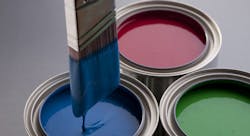What should you consider when reviewing paint warranties?
Warranties can appear to be the same, but as a starting point, you should find out what paint technology your warranty is based on—polyester, silicon-modified polyester or PVDF. Once you’ve established an “apples to apples” comparison with the technologies, you must consider the color palette and its impact on warranty longevity. Review this with your builder, manufacturer or paint company representative.
All paint systems will chalk and fade over time as they weather. The more extreme the climate, the quicker the impact to chalk and fade. Some warranties will highlight in their title block “Limited Lifetime Warranty” (this is a catchphrase and typically in the body of the warranty) that there is a stipulation indicating “lifetime is defined as some number of years,” which may vary based on the paint technology. Additionally some warranties may include a percentage reduction per year for replacement coverage, usually ending after a stated number of years.
All warranties revolve around three major coverage areas: film integrity (adhesion), fade (color/pigmentation) and chalk (resin system). Film integrity requires that the proper primer coat is applied and baked onto the metal before a topcoat system is applied and baked on. Proper application insures proper warranty coverage for film integrity, also referred to as adhesion.
Certain colors are more affected by the environment than others. Fade or color warranties are typically impacted by the percent of organic versus inorganic pigments used to create the final color. Bright vibrant colors—such as yellows, oranges and reds—fade faster and are typically made from organic pigments. Ceramic and select inorganic pigments offer the most durability with the highest resistance to fade and are the most heat-stable, chemically inert, ultraviolet- and weather-resistant pigments known.
The resin, which is the binder in the coating, is another critical element to performance. The better the resin system, the more resistant it is to sun and the environment elements. Chalk is caused by degradation of the resin system at the surface of the finish, which is caused primarily by ultraviolet (UV) radiation and manifests itself as a fine white powder that appears to degrade the color.
Finally, many times a roof or building appears to be faded or chalked, when all it really needs is a simple cleaning to restore the color through removal of surface chalk or other environmental factors.
Compare coating systems and their warranties closely when making a decision on the right coating for your application.
About the Author

Jeff Alexander
Jeff Alexander, Sherwin-Williams Coil Coatings VP of Sales for the Coil and Extrusion division has been with Sherwin-Williams (formerly Valspar) since 1997. He has an entrepreneur spirit and has thrived in building relationships with our customers. Jeff has fully immersed himself in all levels of the coating industry and enjoyed his term as National President at NCCA (National Coil Coating Association). He is focused on continuing to educate customers on the paint industry.
